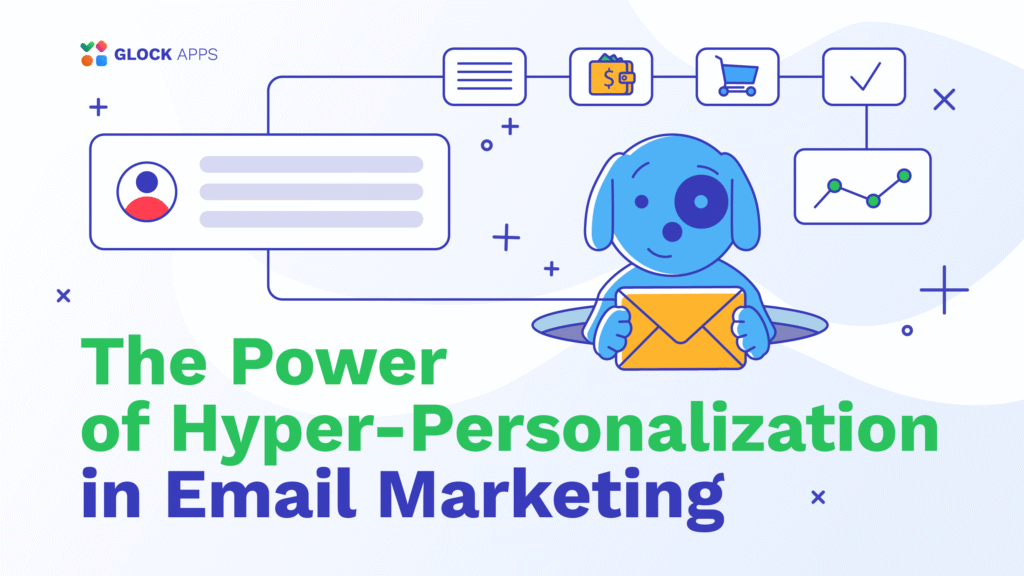In today’s overcrowded digital world, where users are bombarded with endless content and ads, generic messaging just doesn’t work anymore. To truly engage audiences, brands are turning to hyper-personalisation — and Artificial Intelligence (AI) is at the heart of making that possible.
Let’s explore how AI is revolutionising the way marketers deliver tailored experiences through email and web advertising, turning one-size-fits-all campaigns into one-on-one conversations.
—
🔍 What is Hyper-Personalisation?
Hyper-personalisation goes beyond using just a person’s name in an email or greeting. It involves leveraging real-time data, behaviour patterns, past interactions, and predictive analytics to create highly tailored messages for each individual user.
For example, instead of sending a generic offer to all customers, a brand might send a limited-time discount on running shoes to a fitness enthusiast who browsed them last week and just joined a marathon training group.
—
🧠 How AI Powers Hyper-Personalisation
AI plays a central role by analysing massive amounts of data quickly and intelligently. Here’s how it contributes:
1. Customer Segmentation at a Micro Level
AI breaks down your audience into dynamic segments based on interests, actions, purchase history, engagement style, and more. Unlike traditional segmentation, which uses fixed criteria (like age or gender), AI can adapt in real-time.
2. Predictive Analytics
AI can predict what a user is likely to do next — like when they might make a purchase or which product they’re most interested in — and trigger personalised messages accordingly.
3. Natural Language Processing (NLP)
With NLP, AI tools can write customised subject lines, email content, or ad copy tailored to each individual’s tone preference, product history, or language style.
4. Real-Time Behavioural Tracking
AI tracks user activity across platforms (website visits, email clicks, app usage) and instantly adjusts marketing content accordingly.
—
📩 Hyper-Personalisation in Email Marketing
Email remains one of the most powerful tools in digital marketing, but it’s evolving fast with AI.
✉️ Examples of AI-Driven Email Personalisation:
•Dynamic Content Blocks: Emails that change images, CTAs, and messages based on who is opening them.
•Send-Time Optimisation: AI calculates the best time for each user to receive emails based on past open and click data.
•Smart Retargeting: Abandoned cart emails are now more persuasive, timed, and based on user psychology.
💡 Tools Making it Possible:
•Mailchimp with AI Suggestions
•ActiveCampaign (machine learning-powered workflows)
•Seventh Sense for send-time AI
—
🌐 Hyper-Personalisation in Web Advertising
Web advertising is shifting from broad targeting to individual-level targeting, thanks to AI.
💻 How AI Personalises Web Ads:
•Dynamic Display Ads: Ads change content (product image, offer, headline) based on the user viewing it.
•Personalised Landing Pages: After clicking an ad, users see a landing page adapted to their needs and location.
•Retargeting with Context: Ads don’t just follow users around — they evolve based on what users have seen or ignored.
🔧 Tools & Platforms:
•Google Ads Smart Bidding
•Facebook Advantage+ targeting
•AdRoll (cross-platform AI advertising)
—
📊 Real-World Examples
🔹 Netflix
Their content recommendation system doesn’t just suggest shows — it even changes the thumbnail image based on what each user is likely to click on.
🔹 Amazon
It uses AI to personalise homepages, emails, product suggestions, and promotions down to the user’s price range, location, and browsing behaviour.
🔹 Spotify
The famous “Discover Weekly” playlist is AI-generated and unique for every user, showing how hyper-personalisation can drive engagement and loyalty.
—
✅ Benefits of AI-Powered Hyper-Personalisation
•Higher Engagement: Personalised content leads to more clicks, opens, and purchases.
•Improved Customer Loyalty: Users feel understood and valued.
•Better ROI: Personalised ads reduce ad waste and improve conversions.
•Reduced Unsubscribes: Relevant messaging means fewer people opt out.
—
⚠️ Challenges & Ethical Considerations
While hyper-personalisation is powerful, it comes with challenges:
•Data Privacy: Marketers must handle user data ethically and comply with laws (like GDPR).
•Over-Personalisation: If it feels creepy, it backfires. Users may feel watched or uncomfortable.
•Algorithm Bias: AI can unintentionally exclude or misrepresent user groups if not trained well.
The solution? Transparency, opt-in strategies, and a focus on trust.
—
🔮 The Future of Hyper-Personalised Marketing
As AI becomes more advanced, we’ll see:
•Voice-based personalisation via Alexa, Siri, and Google Assistant.
•AI chatbots that deliver offers during conversations in real time.
•Emotion recognition tools that adjust messaging based on user mood (facial analysis or tone of voice).
Brands that embrace ethical, AI-powered personalisation will lead the way in making customers feel seen, understood, and valued — not just marketed to.
—
📝 Conclusion
Hyper-personalisation isn’t just a buzzword — it’s the new standard. AI is enabling brands to shift from broadcasting messages to having conversations. By using data smartly and ethically, companies can craft more meaningful, effective experiences across emails, websites, and ads.
For digital marketers, understanding and leveraging AI tools for hyper-personalisation is no longer optional — it’s essential for standing out in the attention economy.
—
